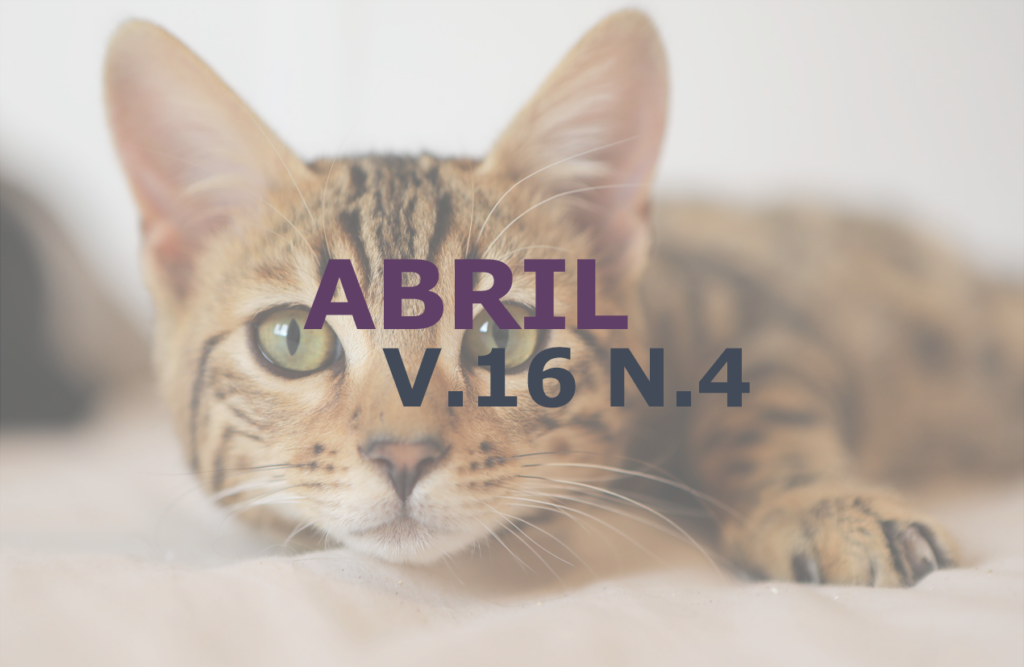Brachial plexus avulsion in cat: Case report
DOI:
https://doi.org/10.31533/pubvet.v16n04a1099.1-7Keywords:
Cervicothoracic injury, neurology in cats, Horner's syndromeAbstract
The aim of this paper is to report a case of brachial plexus avulsion (BPA) in a domestic cat, treated at the Polyclinic Veterinary School of the University Center of Valença – UNIFAA. The brachial plexus is a branch of nerves that emerge from the spinal cord and innervate the thoracic limb. Avulsion in this plexus occurs when the nerves are frayed, by abduction or violent traction of the foreleg, caused in trauma that often happens to domestic cats (Felis catus). The most evident clinical signs are inability to extend the elbow, drag the back of the limb on the ground, difficulty in supporting weight, neurogenic muscle atrophy, absence or decrease in muscle tone and segmental reflexes, with the use of an Elizabethan collar and the fixation of a bracing around the involved limb. Horner's Syndrome is another common clinical sign in brachial plexus injuries, due to damage to the nerve roots of the spinal segments T2 and T3. The diagnosis of BPA is made through the patient's history, anamnesis, neurological physical examination, clinical signs, electrodiagnosis and complementary exams, the biggest obstacle being to discover the extension and exact location of the lesion. Treatment can be conservative if there is improvement in the clinical picture after three weeks of treatment, surgical if the animal is showing signs of pain and self-mutilation, or neurotization by transposition and microsurgical anastomosis. The prognosis will depend on the location, extension and type of injury. She was seen at the Polyclinic Veterinary of the UNIFAA, a cat, with no defined breed, weighing 5.2 kg. The tutor reported that he found her inside the engine compartment of a car. On physical examination, the patient did not show any pain response to the tests performed, nor proprioception in the right thoracic limb (MTD). After neurological examination, it could be identified that the animal had Horner's Syndrome and spinal cord injury between C6-T2 due to brachial plexus avulsion. Conservative treatment was instituted until ambulation improved, and then high MTD amputation surgery was indicated. It is concluded that this report can contribute to the literature as a source of study in anatomy, neurology, surgical technique, diagnosis and treatment for brachial plexus avulsions in cats.
Downloads
Published
Issue
Section
License
Copyright (c) 2022 Kayo Barreto de Almeida, Fabiano Luiz Dulce de Oliveira

This work is licensed under a Creative Commons Attribution 4.0 International License.
Você tem o direito de:
Compartilhar — copiar e redistribuir o material em qualquer suporte ou formato
Adaptar — remixar, transformar, e criar a partir do material para qualquer fim, mesmo que comercial.
O licenciante não pode revogar estes direitos desde que você respeite os termos da licença. De acordo com os termos seguintes:
Atribuição
— Você deve dar o crédito apropriado, prover um link para a licença e indicar se mudanças foram feitas. Você deve fazê-lo em qualquer circunstância razoável, mas de nenhuma maneira que sugira que o licenciante apoia você ou o seu uso. Sem restrições adicionais
— Você não pode aplicar termos jurídicos ou medidas de caráter tecnológico que restrinjam legalmente outros de fazerem algo que a licença permita.





